You’ve brought home your adorable, fluffy Maltese puppy, a tiny cloud of joy and affection. You picture long walks, friendly greetings with neighbours, and relaxing at a café with your well-behaved companion. But what if that dream is replaced by a reality of a nervous, yapping dog that hides behind your legs? The secret to raising a confident, happy Maltese lies in one crucial process: socialization.
Properly socializing your Maltese puppy is the single most important thing you can do to shape their future temperament and prevent a lifetime of fear and anxiety. It’s about more than just meeting other dogs; it’s about building a foundation of resilience and confidence that will allow your tiny friend to navigate the human world with ease. Let’s dive into how to do it right, ensuring your Maltese grows into the brave, joyful companion you’ve always wanted.
Understanding the True Meaning of Puppy Socialization
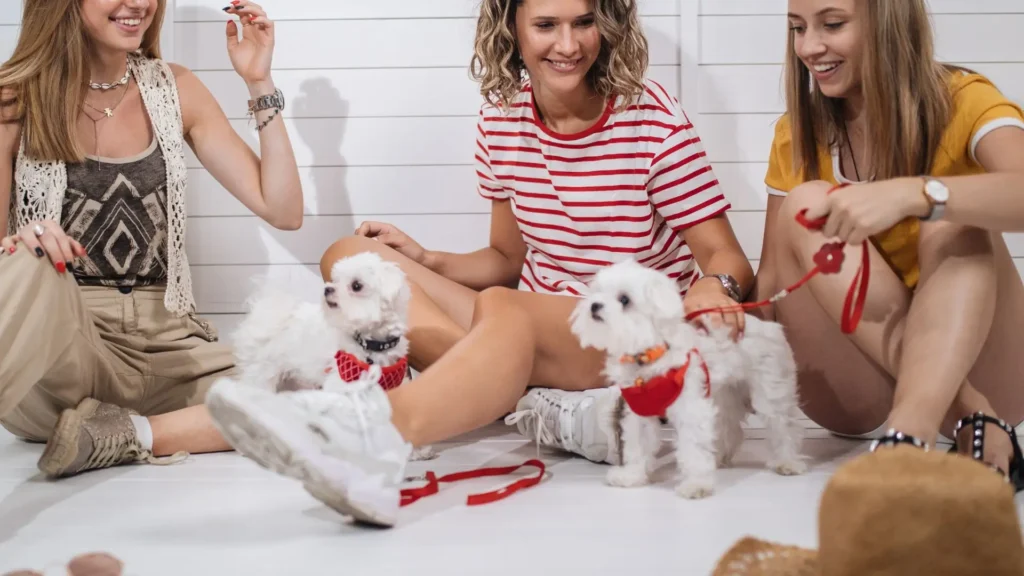
When people hear the term “puppy socialization,” their minds often jump straight to a chaotic dog park scene, with dozens of dogs running and wrestling. For a small and sometimes delicate breed like the Maltese, this image can be terrifying—and rightfully so. This is a common and dangerous misconception. True socialization is not about forcing your puppy into overwhelming interactions.
Socialization is the gentle and positive process of exposing your puppy to a wide variety of new experiences—sights, sounds, smells, surfaces, people, and animals—in a way that builds confidence rather than fear.
The goal is to teach your puppy that the world is a safe and interesting place, not a scary one. It’s about creating positive associations with novelty. When a new thing appears (like a person in a big hat or a loud truck driving by), you want your puppy’s reaction to be curiosity, not terror. Every new experience should be paired with something your puppy loves, like a high-value treat, praise, or a fun game. This way, they learn that new things predict good things happening.
Think of it as filling up your puppy’s “experience library” with positive entries. A well-socialized puppy has a vast library to draw from, so when they encounter something new as an adult, they can file it under “probably safe” instead of “potential threat.” An under-socialized puppy has a very small library, so almost every new experience triggers a fear response.
The Golden Window: Why Timing is Everything
There’s a reason why veterinarians and trainers are so insistent about early socialization. There is a very specific, critical period in a puppy’s development where their brain is uniquely wired to accept new things without fear. This is known as the critical socialization window.
This window is generally accepted to be between 3 and 16 weeks of age.
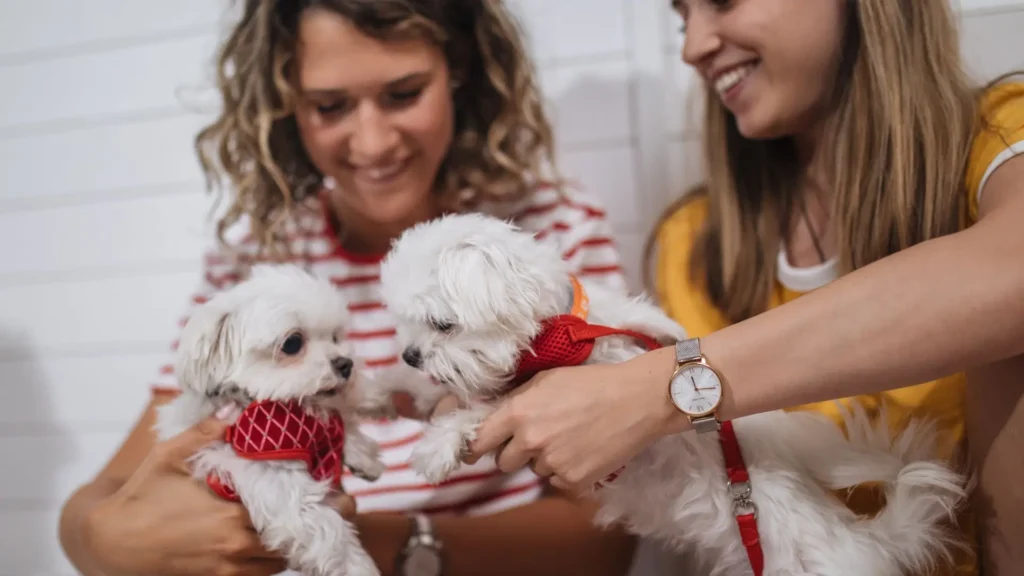
During this time, your Maltese puppy’s brain is like a sponge. The experiences they have—both good and bad—will have a lasting impact on their personality and behaviour for the rest of their life. Before this window, they are primarily influenced by their mother and littermates. After this window closes, their natural caution and fear of the unknown begin to increase significantly. It becomes much harder to introduce new things without eliciting a fearful reaction.
This presents a classic dilemma for new puppy owners: The critical socialization period directly overlaps with the period before a puppy is fully vaccinated. Many owners, guided by a well-meaning but outdated fear of disease, keep their puppies isolated at home until their vaccination series is complete, around 16-20 weeks. Unfortunately, by this time, the prime window for socialization has slammed shut. This can inadvertently create a dog that is physically healthy but behaviourally anxious and fearful.
The American Veterinary Society of Animal Behavior (AVSAB) states that for most puppies, the risk of death from a behaviour problem (like aggression or fear that leads to euthanasia) is far greater than the risk of contracting a disease like parvovirus when proper precautions are taken.
Starting Safely: Socialization Before Full Vaccinations
So, how do you bridge the gap? How do you socialize safely before your Maltese has all their shots? The key is to be creative and controlled. You can expose your puppy to a massive range of experiences without ever letting their paws touch public ground where unvaccinated dogs may have been.
Socialization at Home
Your home is a fantastic, safe laboratory for new experiences:
- Sounds: Don’t tiptoe around! Let your puppy get used to everyday household sounds. Run the vacuum cleaner in another room, initially. Use the blender, knock on the door, and ring the doorbell. Pair these sounds with treats. If the noise happens and your puppy gets a piece of chicken, the noise becomes a predictor of good things.
- Surfaces: Encourage your puppy to walk on different textures inside your home. Lay down a crinkly piece of cardboard, a soft blanket, a slippery vinyl mat, or a wobbly cushion to build their confidence with different footings.
- Handling: Gently handle your puppy all over their body every day. Touch their paws, look in their ears, lift their lips to see their teeth, and hold their tail. Keep sessions short and pair them with praise and treats. This prepares them for vet visits and grooming, which is essential for a long-haired breed like the Maltese.
- Guests: Invite friends over. Have them come in one at a time. Ask them to sit on the floor and let the puppy approach them. Give your guest some special treats to offer your puppy. This teaches your Maltese that new people entering their space is a positive event.
- Safe Doggy Dates: Do you have a friend with a calm, healthy, fully vaccinated adult dog? Invite them to your home or garden. A controlled, positive interaction with a known, gentle dog is invaluable and much safer than a public dog park.
Controlled Outings
Take your puppy out into the world, but keep them off the ground:
- Carry Them: Use a puppy sling, carrier bag, or simply hold your Maltese in your arms. Walk around a busy town center or a pet-friendly outdoor mall. Let them see the people, hear the traffic, and smell the new smells from a safe vantage point.
- Shopping Cart Trips: Go to pet-friendly stores like hardware stores or pet supply stores. Place a blanket in a shopping cart and wheel your puppy around. They will be exposed to sliding doors, different types of people, strange noises, and announcements over the intercom, all from the safety of the cart.
- Park Bench Observation: Take a blanket and sit on a park bench with your puppy on your lap. Let them watch the world go by—people jogging, children playing at a distance, bikes rolling past. Reward them with treats for calm observation.
- Car Rides: Get your puppy used to the car. Start with just sitting in a parked car with the engine off. Graduate to the engine on. Then, take very short trips around the block, ending somewhere fun (like back home for a treat!). This prevents car ride anxiety later on.
Your Maltese Puppy’s Socialization Checklist
To ensure you cover all your bases, it helps to think in categories. Aim to introduce your puppy to a few new things from this list each week during their critical socialization window. Remember, the key is the quality of the exposure (positive and brief), not the quantity.
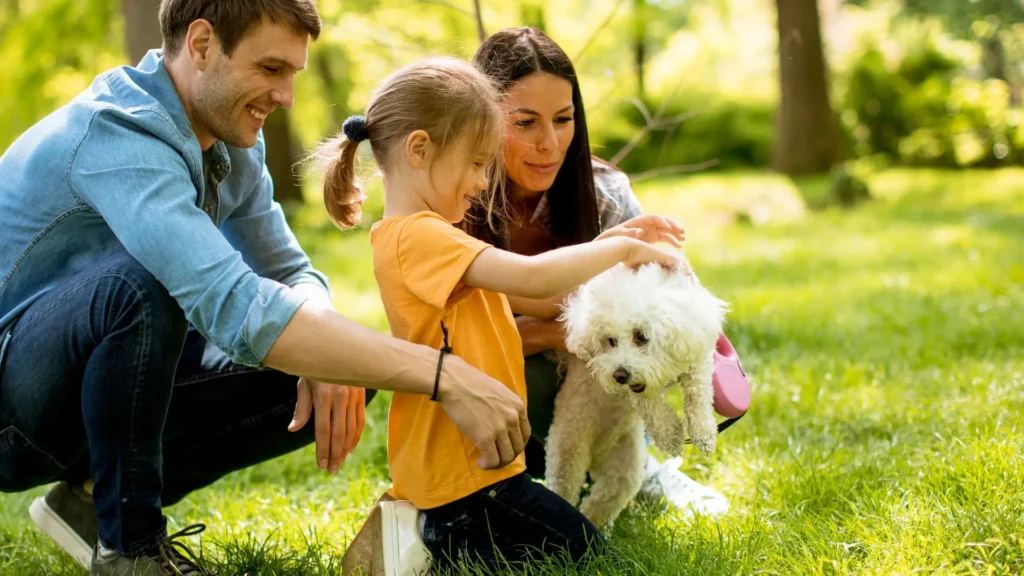
People
- Women and men
- Supervised, gentle children (teach them how to pet calmly)
- People wearing hats or sunglasses
- People with beards
- People in uniforms (mail carriers, delivery people)
- People using mobility aids (wheelchairs, walkers, canes)
- People of different ethnicities
- Crowds (from a safe, carried distance)
Environments and Sights
- The car (parked and moving)
- A pet-friendly store
- A quiet café patio (on your lap or in a carrier)
- An elevator
- Automatic sliding doors
- Stairs (once they are big enough to navigate them safely)
- Different rooms in the house (laundry room, garage)
- Balloons, umbrellas, skateboards (all from a distance)
Sounds
- Vacuum cleaner, blender, hairdryer
- Doorbell and knocking
- Traffic noises
- Sirens (from a distance)
- Children playing/shouting (from a distance)
- Thunder and fireworks (you can play recordings of these at a very low volume while giving treats to desensitize them)
Other Animals (with Caution)
- Well-behaved, known, vaccinated adult dogs
- A reputable puppy kindergarten class (this is one of the best things you can do! The environment is sanitized, and all puppies are at a similar stage of vaccination and development).
- Seeing other animals like cats, squirrels, or horses from a safe distance, rewarding your puppy for looking calmly.
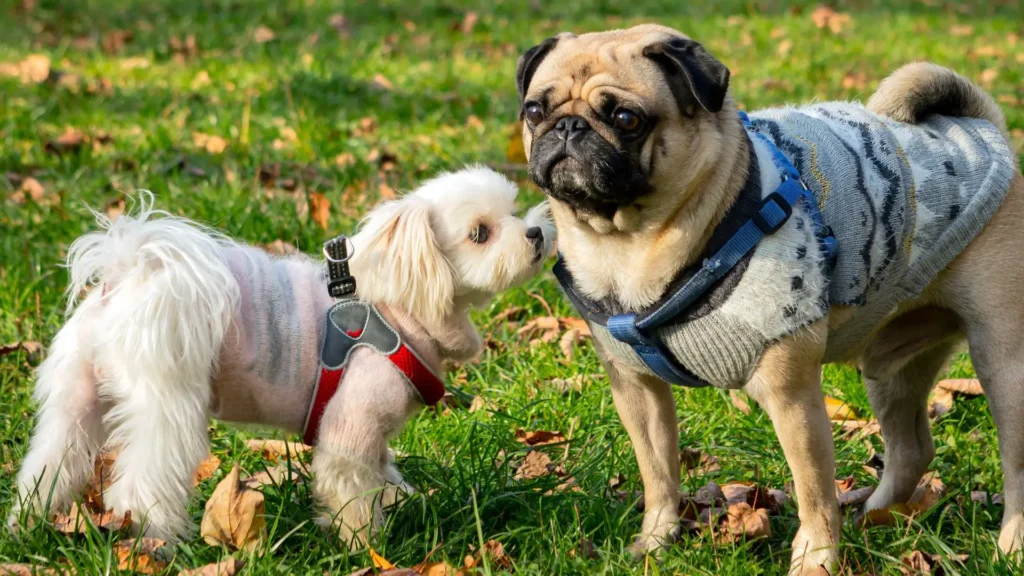
The Art of Positive Association: How to Do It Right
Simply exposing your puppy to things is not enough; the exposure must be positive. This is the cornerstone of preventing fearfulness. Here are the golden rules for every socialization outing:
- Go at the Puppy’s Pace: This is the most important rule. Never force your Maltese into a situation they are not comfortable with. Watch their body language closely. A happy, confident puppy has a loose, wiggly body and a wagging tail. A nervous puppy might yawn, lick their lips, show the whites of their eyes (“whale eye”), tuck their tail, or try to hide. If you see these signs, calmly increase the distance from the trigger or end the interaction.
- Keep It Short and Sweet: A socialization session can be as short as 5 minutes. It’s far better to have a successful 5-minute outing than a 30-minute one that ends with your puppy being overwhelmed. Always end on a positive note, while your puppy is still happy and engaged.
- Use High-Value Treats: This is not the time for dry kibble. Use tiny pieces of cooked chicken, cheese, or special soft puppy treats that your Maltese goes crazy for. The treat should be so good that it overshadows any potential uncertainty about the new experience.
- You Are Their Protector: Your puppy looks to you for safety cues. If you are anxious and tense, they will be too. Project a calm, happy, and confident demeanor. Be prepared to be your puppy’s advocate. It is perfectly okay to say, “No, thank you,” to a stranger who wants to pet your puppy. A good phrase is, “He’s in training right now, so we’re just observing from a distance today.” Protecting your puppy from unwanted interactions is part of the socialization process.
Common Socialization Mistakes That Can Create Fear
Even with the best intentions, owners can make mistakes that inadvertently create fear instead of preventing it.
- Flooding: This is the opposite of good socialization. Flooding is immersing a puppy in a situation that terrifies them, hoping they’ll “get over it.” Taking a timid puppy to a loud, chaotic dog park is a classic example. This doesn’t teach them the world is safe; it confirms their fear that the world is terrifying and that you won’t protect them.
- Relying on Dog Parks: Dog parks are not ideal socialization spots for puppies, especially small breeds like the Maltese. They can be unpredictable, with poorly behaved adult dogs who may bully or frighten a small puppy, creating a negative association with other dogs that can last a lifetime. Well-run puppy classes are a much safer alternative.
- Forcing Interactions: Pushing your puppy into the arms of a stranger or dragging them towards another dog when they are clearly scared is counterproductive. This breaks their trust in you and reinforces their fear. Always allow your puppy to approach new things on their own terms.
- Stopping Too Soon: While the 3-16 week window is the most critical, socialization is a lifelong process. Continue to introduce your Maltese to new, positive experiences throughout their life to keep their confidence high and their social skills sharp.
My Maltese is Already Fearful: What Can I Do?
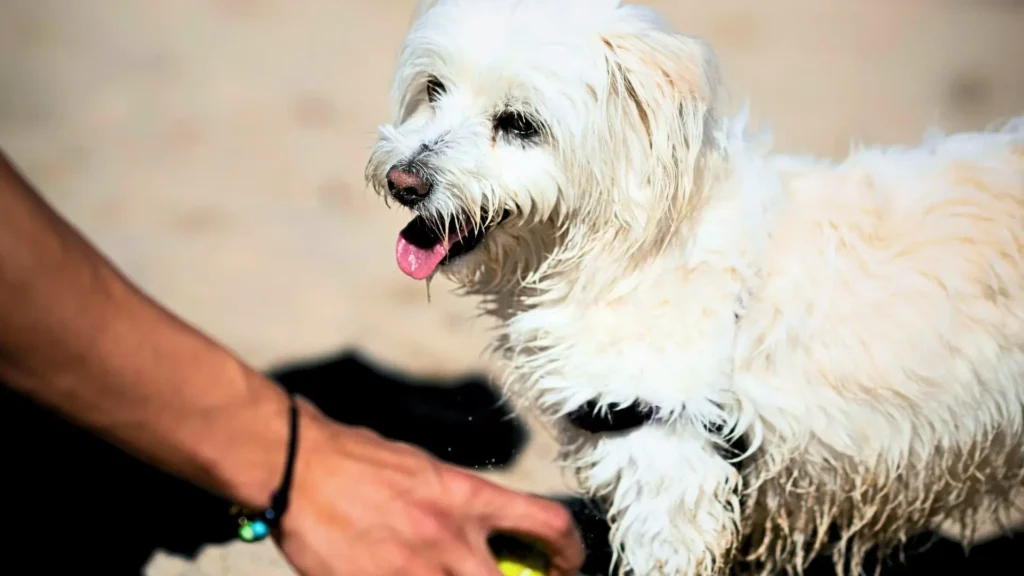
What if you’ve missed the window, or you’ve rescued a Maltese that is already showing signs of fearfulness? Don’t despair. It is still possible to help them, but it requires more time, patience, and a different approach.
The process involves two key concepts: desensitization and counter-conditioning.
- Desensitization: This means exposing your dog to their trigger (the scary thing) at such a low intensity that they don’t react fearfully. This usually means starting at a very far distance. If your Maltese is terrified of other dogs, you might start by simply sitting on a park bench where a dog might be visible 100 yards away.
- Counter-Conditioning: This is the process of changing your dog’s emotional response to a trigger. You do this by pairing the trigger with something amazing. So, every single time your dog sees their trigger (the distant dog), you feed them an incredibly high-value treat. Over time, the dog’s brain rewires. The sight of another dog no longer predicts fear; it predicts delicious chicken.
Working with a fearful dog is a delicate process. It’s crucial to work “under threshold,” meaning you keep the intensity of the trigger low enough that your dog never goes into a full-blown panic. If your dog is reacting (barking, lunging, hiding), you are too close and need to create more distance.
For established fear or anxiety, it is highly recommended that you seek help from a qualified professional. Look for a certified professional dog trainer (CPDT-KA), a veterinary behaviorist (DACVB), or a certified applied animal behaviorist (CAAB) who uses positive, force-free methods.
Conclusion
Socializing your Maltese puppy is an act of love and a profound investment in their future happiness. It’s not a chore to be checked off a list, but an ongoing adventure you and your puppy embark on together. Remember that the goal is not to expose them to everything all at once, but to provide a steady stream of new, positive experiences that build their confidence brick by brick.
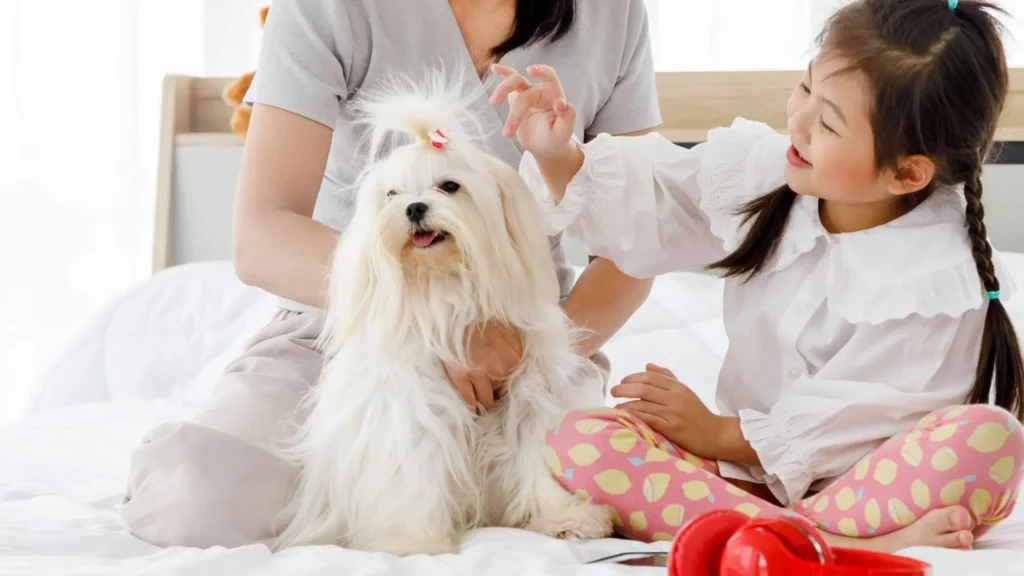
By understanding the critical socialization window, focusing on positive associations, and always acting as your puppy’s trusted protector, you can avoid the pitfalls of fearfulness. You will be raising a Maltese who is not just a beautiful companion, but a resilient, curious, and joyful dog, ready to confidently explore the world by your side. The effort you put in during these first few months will pay dividends for a lifetime, forging an unbreakable bond with a happy, well-adjusted best friend.
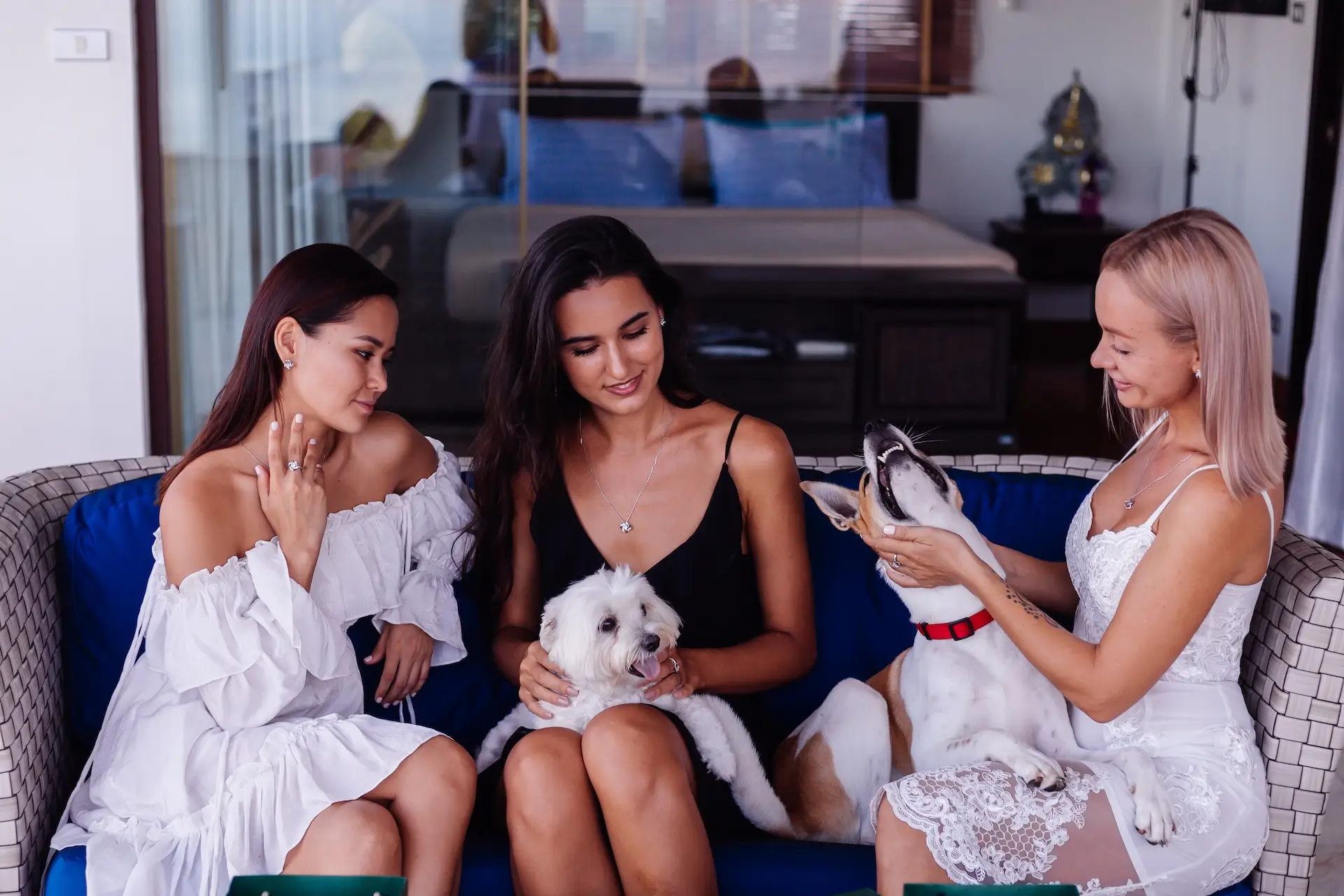
Leave a Reply